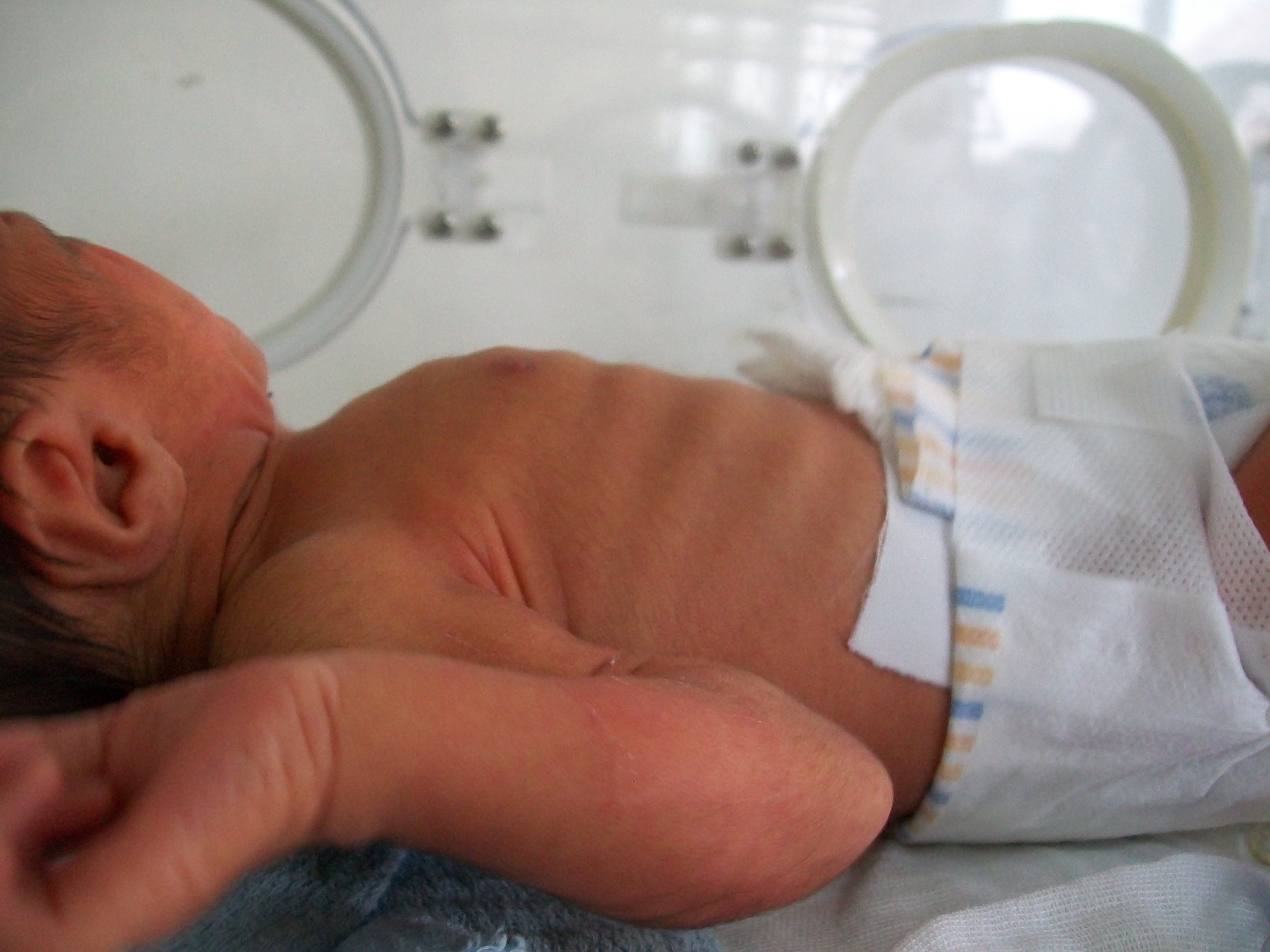Labored Breathing on:
[Wikipedia]
[Google]
[Amazon]
Labored respiration or labored breathing is an abnormal respiration characterized by evidence of increased effort to breathe, including the use of accessory muscles of respiration, stridor, grunting, or nasal flaring.
 Presentations of labored respiration include:
* Hyperpnea - faster and/or deeper breathing
*
Presentations of labored respiration include:
* Hyperpnea - faster and/or deeper breathing
* UpToDate >Patient information: Croup in infants and children
Charles R Woods, MD, MS. Last literature review version 17.3: September 2009
* Use of accessory muscles of respiration rather than only the diaphragm
Retrieved on Dec 12, 2009 *
Classification
Labored breathing is distinguished fromshortness of breath
Shortness of breath (SOB), known as dyspnea (in AmE) or dyspnoea (in BrE), is an uncomfortable feeling of not being able to breathe well enough. The American Thoracic Society defines it as "a subjective experience of breathing discomfort that con ...
or ''dyspnea'', which is the sensation of respiratory distress rather than a physical presentation.
Still, many simply define dyspnea as ''difficulty in breathing'' without further specification, which may confuse it with e.g. labored breathing or tachypnea
Tachypnea, also spelt tachypnoea, is a respiratory rate greater than normal, resulting in abnormally rapid and shallow breathing.
In adult humans at rest, any respiratory rate of 1220 per minute is considered clinically normal, with tachypnea b ...
(rapid breathing). Labored breathing has occasionally been included in the definition of dyspnea as well. However, in the standard definition, these related signs may be present at the same time, but do not necessarily have to be. For instance, in respiratory arrest by a primary failure in respiratory muscles the patient, if conscious, may experience dyspnea, yet without having any labored breathing or tachypnea. The other way around, labored breathing or tachypnea can voluntarily be performed even when there is no dyspnea.
Presentations
Tachypnea
Tachypnea, also spelt tachypnoea, is a respiratory rate greater than normal, resulting in abnormally rapid and shallow breathing.
In adult humans at rest, any respiratory rate of 1220 per minute is considered clinically normal, with tachypnea b ...
- increased breathing rate
* ''Retractions'' or ''recessions'' – sucking in of the skin, around the ribs and the top of the sternumCharles R Woods, MD, MS. Last literature review version 17.3: September 2009
Causes
Causes of labored breathing include: * Severe metabolic acidosis, particularlydiabetic ketoacidosis
Diabetic ketoacidosis (DKA) is a potentially life-threatening acute complication of diabetes mellitus. Signs and symptoms may include vomiting, abdominal pain, deep gasping breathing, increased urination, weakness, confusion and occasionally ...
(DKA) but also kidney failure
Kidney failure, also known as renal failure or end-stage renal disease (ESRD), is a medical condition in which the kidneys can no longer adequately filter waste products from the blood, functioning at less than 15% of normal levels. Kidney fa ...
. The specific associated breathing pattern is called Kussmaul breathing.
* Cardiac diseaseMedilexicon Medical Dictionary – 'Labored Respiration'Retrieved on Dec 12, 2009 *
Respiratory failure
Respiratory failure results from inadequate gas exchange by the respiratory system, meaning that the arterial oxygen, carbon dioxide, or both cannot be kept at normal levels. A drop in the oxygen carried in the blood is known as hypoxemia; a r ...
See also
* List of terms of lung size and activity * Agonal respiration, a specific type of abnormal breathing patternReferences
{{reflist Breathing abnormalities